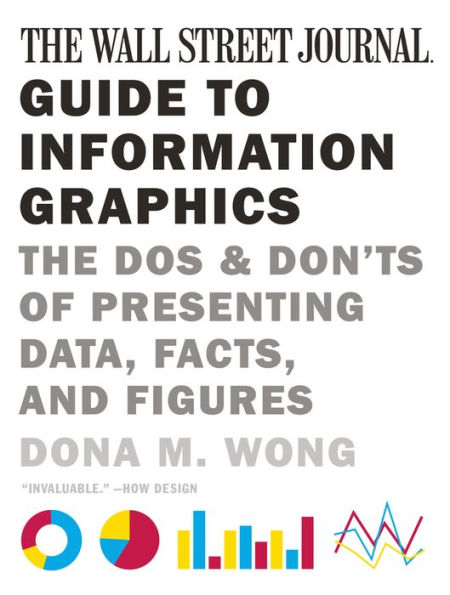The Wall Street Journal Guide to Information Graphics: The Dos and Don'ts of Presenting Data, Facts, and Figures
The definitive guide to the graphic presentation of information. In today’s data-driven world, professionals need to know how to express themselves in the language of graphics effectively and eloquently. Yet information graphics is rarely taught in schools or is the focus of on-the-job training. Now, for the first time, Dona M. Wong, a student of the information graphics pioneer Edward Tufte, makes this material available for all of us. In this book, you will learn:
1116840794
- to choose the best chart that fits your data;
- the most effective way to communicate with decision makers when you have five minutes of their time;
- how to chart currency fluctuations that affect global business;
- how to use color effectively;
- how to make a graphic “colorful” even if only black and white are available.
The book is organized in a series of mini-workshops backed up with illustrated examples, so not only will you learn what works and what doesn’t but also you can see the dos and don’ts for yourself. This is an invaluable reference work for students and professional in all fields.
The Wall Street Journal Guide to Information Graphics: The Dos and Don'ts of Presenting Data, Facts, and Figures
The definitive guide to the graphic presentation of information. In today’s data-driven world, professionals need to know how to express themselves in the language of graphics effectively and eloquently. Yet information graphics is rarely taught in schools or is the focus of on-the-job training. Now, for the first time, Dona M. Wong, a student of the information graphics pioneer Edward Tufte, makes this material available for all of us. In this book, you will learn:
- to choose the best chart that fits your data;
- the most effective way to communicate with decision makers when you have five minutes of their time;
- how to chart currency fluctuations that affect global business;
- how to use color effectively;
- how to make a graphic “colorful” even if only black and white are available.
The book is organized in a series of mini-workshops backed up with illustrated examples, so not only will you learn what works and what doesn’t but also you can see the dos and don’ts for yourself. This is an invaluable reference work for students and professional in all fields.
24.95
In Stock
5
1

The Wall Street Journal Guide to Information Graphics: The Dos and Don'ts of Presenting Data, Facts, and Figures
160
The Wall Street Journal Guide to Information Graphics: The Dos and Don'ts of Presenting Data, Facts, and Figures
160Paperback(Reprint)
$24.95
24.95
In Stock

Product Details
| ISBN-13: | 9780393347289 |
|---|---|
| Publisher: | Norton, W. W. & Company, Inc. |
| Publication date: | 12/16/2013 |
| Edition description: | Reprint |
| Pages: | 160 |
| Sales rank: | 475,345 |
| Product dimensions: | 8.90(w) x 11.70(h) x 0.30(d) |
About the Author
From the B&N Reads Blog
